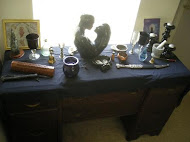The true myrrh is known in the markets as karam, formerly called Turkey myrrh. Also called Gum Myrrh Tree, Daran, Mirra Balsom Odendron, Commiphora Myrrha, Mirra, Morr-Didin, Didthin, and Bowl. It was first recognized about 1822 at Ghizan on the Red Sea coast, a district so bare and dry that it is called 'Tehama,' meaning 'hell.' Today, most of the internationally-traded myrrh and frankincense are produced in the southern Arabian peninsula (Oman, Yemen) and in northeast Africa (Somalia). Myrrh, traded throughout the Middle East at least since 1500 B.C., eventually came to China. There is mention of myrrh in a 4th century (A.D.) Chinese book that is no longer existent but is quoted directly in a later text. As in the Middle East, myrrh was used in China for making incense, and is so used even today. It is traditionally used in pharmaceutical products, including mouthwashes, gargles, and toothpaste; also used in dentistry. It is also extensively used as fixatives and fragrance components in soaps, detergents, cosmetics, and perfumes, especially oriental types and heavy florals.
Myrrh has had spiritual significance since ancient times and was also adopted as medicines for physical ailments. It has been used from remote ages as an ingredient in incense, perfumes, etc., in the holy oil of the Jews and the famous incense of the Egyptians - Kyphi - for embalming and fumigations. It was said to come from the tears of Horus, the flacon-headed sun god, and large quantities of Myrrh were needed for the Egyptian temples in particular. It was often used in general magic workings, especially those requiring it to be burned at night. It was also used for banishing, and for beverage flavoring. as well as being an ingredient of Metopian, an Egyptian medicinal ointment used to treat ulcers, and cuts in sinews and muscles. (It appeared in papyrus medicinal manuscripts dating back to Khufu’s reign [2,800 BCE].) Myrrh was burned to the god Ra at noon in ancient Egypt, and it also fumed in the temples of Isis (sacred to Isis, Adonis and Ra) - in fact, it was burned in ancient temples of Babylon, Greece, India, Rome and China. Myrrh was a revered funeral herb, burnt as an incense to honor the dead. When referring to myrrh, Westerners might immediately think of it's historic importance in religion. The herb is best known through the story of the Three Wise Men (Magi) delivering gold, frankincense, and myrrh for the baby Jesus; not only was myrrh present at the birth of Christ – as one of the Magi’s three gifts – but at his death as well being also used to anoint Jesus' body after the crucifixion. This herb, valued like gold, was mentioned repeatedly in the Old Testament, in instructions to Moses about making incense and anointing oil, and in the Song of Solomon. It is thought to have been one of the materials used by the Queen of Sheba in her seduction of King Solomon.
As a wash it is good for spongy gums and ulcerated throats. It is an astringent and stimulant, and can be used as an expectorant in the absence of feverish symptoms, healing. In tonic form it is a stomachic carminative, exciting appetite and the flow of gastric juice. In liquid form it is an astringent wash. Among it's many uses are as anti-inflammatory, anti-microbial, anti-spasmodic, antiviral, fungicidal, sedative, and stimulant (especially pulmonary). In modern Chinese Materia Medica it is classified as an herb for vitalizing circulation of blood and is utilized for treating traumatic injury, painful swellings, masses, and other disorders related to stasis syndromes. It provides easing and healing of amenorrhea, arthritis, asthma, athlete’s foot, bronchitis, colds, cough, cracked heels, cuts, diarrhea, dysentery, dyspepsia, eczema, flatulence, gingivitis, gum infections, hemorrhoids, hyperthyroidism, laryngitis, loss of appetite, mouth ulcers, pyorrhea, ringworm, sore throat, and thrush. It provides positive results when used for tuberculosis, ulcers, voice loss, wasting degenerative disease, wounds, and wrinkles. It also calms sexual excitement and treats uterine disorders.
In Druid and Wiccan tradition, it has been used in healing incense, especially with frankincense. The essential oil can be added to blends designed to enhance spirituality and meditation, and is also used in healing mixtures. The oil cam also be used for purification, consecration of sacred and ceremonial objects, protection and hex-breaking, and is generally regarded as excellent for religious rituals of magic. It was also commonly used in charm bags. It is regarded as advisable to anoint one’s house with Myrrh every morning and evening as part of any protection ritual. Inhale the myrrh fragrance to awaken your awareness of the spiritual reality behind our everyday existence. Use prior to or during religious rituals. It calms fears and halts questions concerning the future. Inhale the myrrh fragrance with visualization to speed healing of the physical body. Use in ritual to heighten awareness of the energy flow in both worlds. It aids meditation, expands wisdom and remains an essential herb in rituals of death and dying, as well as helping those grieving to understand the mystery of death. Myrrh is useful for those working through sorrows and traumas of all kinds and is of unequaled value to those suffering from sexual abuse. Burn the herb and walk through the area you wish to cleanse, or use to purify and protect whatever your wish. Pass objects through the smoke to cleanse of negative energy. Burn during healing wishes. Myrrh is used in magic for protection, peace, and exorcism. As an incense it can be used to deepen mediation and aid contemplation. Mixed with other magical herbs, it is a standard in magic enhancement - it increases the powers of other herbs when they are used in conjunction. It is rarely burned alone, but usually in conjunction with frankincense or other resins.
Myrrh (as herb or essential oil) may be used in as an ingredient or substitute for magic spells and formulas related to lunar matters (compassion, dreams, family, fertility, gardening, healing, love, peace, promoting sleep, prophecy, prophetic (or psychic) dreams), psychic awareness, sleep, and spirituality). Be careful about substitutions for preparations that will be ingested or come in contact with the skin. These substitutions do not apply to medical uses.
To reverse any love spell, etch or write your name and the name of your bewitched lover on the side of a white votive candle. On any night of the Waning Moon, anoint the candle with myrrh oil, light the candle, and recite a chant or poem reversing the love spell. Burn the entire candle (do not leave lit candles unattended). Let the remaining wax cool and harden. Wrap the leftover wax in white cloth (preferably silk), tie with a white ribbon, and toss into a body of (preferably running) water (such as a river or the ocean).
Sources:
Disclaimer: No one involved in this blog or its contents may be held responsible for any adverse reactions arising from following any of the instructions/recipes on this list. It is the reader's personal responsibility to exercise all precautions and use his or her own discretion if following any instructions or advice from this blog.















No comments:
Post a Comment